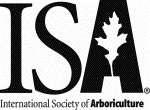
| Current Articles |
| Browse Archives |
| Search |
| Contact Us |
| AUF Home |
 |
Arboriculture & Urban Forestry Online
| Volume 33, Issue 2 —
March 2007
https://www.isa-arbor.com/Publications/Arboriculture-Urban-Forestry |
|
Hurricanes and the Urban Forest: II. Effects on Tropical and Subtropical Tree Species (View PDF) Mary L. Duryea, Eliana Kampf, Ramon C. Littell, and Carlos D. Rodríguez-Pedraza Abstract: In 1998 when Hurricane Georges (177 km/h) crossed over the entire island of Puerto Rico, and in 2004 when Hurricanes Jeanne (193 km/h) and Charley (233 km/h) struck south Florida, U.S., we measured the impacts of these hurricanes on the urban forest composed of tropical and subtropical species. In addition, we also used previous published data for Hurricane Andrew for some analyses. The percent urban forest loss ranged from 13% for Georges to 16% for Jeanne to 18% for Charley. In Hurricanes Jeanne and Charley, palms survived significantly better than all other trees. Some of the best surviving species in Florida’s hurricanes were gumbo limbo (Bursera simarouba), sea grape (Coccoloba uvifera), strangler fig (Ficus aurea), live oak (Quercus virginiana), laurel oak (Quercus laurifolia), and baldcypress (Taxodium distichum). Of the species measured in Puerto Rico, the species with the highest survival and least branch damage were Santa Maria (Calophyllum calaba), Caribbean pine (Pinus caribaea), schefflera (Schefflera actinophylla), and West Indian mahogany (Swietenia mahogani). Losing leaves during these hurricanes had no relationship with how well trees survived. In Hurricanes Jeanne, Charley, and Georges, 3%, 4%, and 11%, respectively, of the trees that fell damaged property. Native tree species survived better than exotic species in Hurricanes Jeanne and Charley but not in Hurricane Georges. Trees growing in groups had greater survival and less branch loss in Hurricane Jeanne than those growing individually. Wood density was not related to survival or branch loss for tree species in Hurricanes Jeanne, Charley, Georges, or Andrew. Two other measurements of wood strength, modulus of elasticity and modulus of rupture, were related to survival and branch loss in Jeanne but not Charley. Tree species with dense crowns had greater survival and less branch loss than moderate- or open-crowned species. Tree species with decurrent growth form survived better than excurrent trees in Hurricane Jeanne with no difference in Charley. Trees with the most rooting space (>7 m2) had the lowest branch loss and the greatest survival in Hurricane Georges. A reanalysis of seven dicot species and their survival in Hurricane Andrew showed that survival for pruned trees was 73% compared with 47% for unpruned trees. A survey of 85 arborists, scientists, and urban foresters ranked species for their wind resistance. Using our results from hurricanes and incorporating results from the survey and the scientific literature, we have developed lists of relative wind resistance for tropical and subtropical tree species. These lists are presented with the caveat that no tree is completely windproof and that other factors such as soil conditions, wind intensity, cultural practices, and tree health and age also contribute to wind firmness. Keywords: Rooting space; urban trees; wind; wind resistance; wood density. |
Current Articles
| Browse Archives | Search | AUF Home | ISA Home
| Get Acrobat